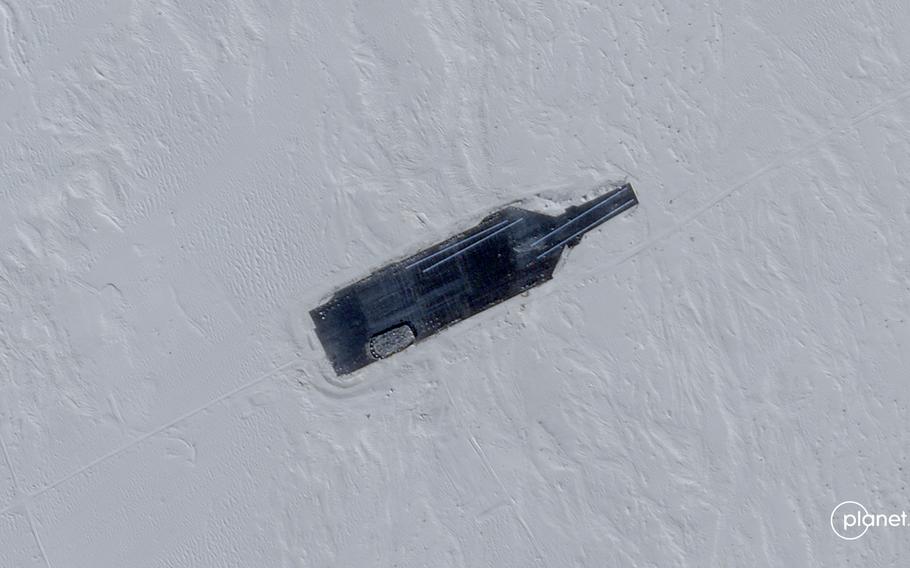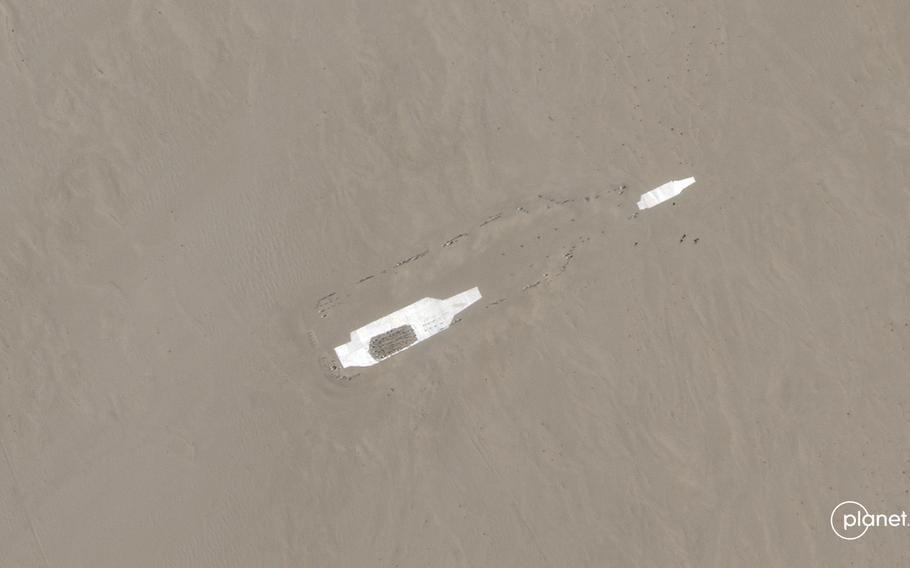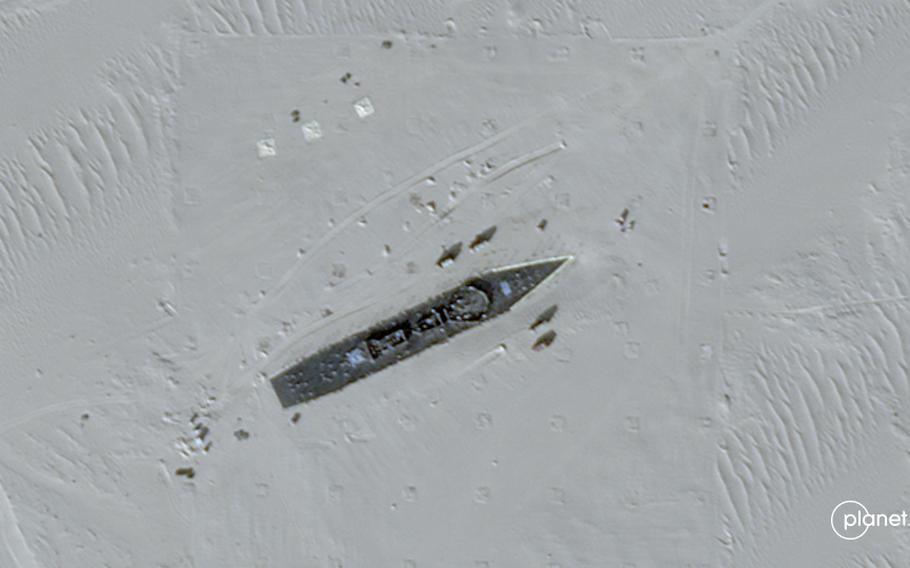
Planet Labs captured photos of China’s new mock targets on Jan. 1, 2023. This one appears to match the profile of the USS Gerald R. Ford, which entered service late last year. (Image © Planet Labs PBC)
China has built another mock vessel that resembles the U.S. Navy’s newest aircraft carrier and will likely use it for target practice for its “growing missile arsenal,” according to a defense expert.
Satellite imaging company Planet Labs captured photos of the mock target on Jan. 1. It appears to match the profile of the USS Gerald R. Ford, which entered service late last year.
Planet Labs provided satellite images of the mock carrier spotted near Ruoqiang County in Xinjiang, a northwestern province of deserts and mountain ranges.
The mock carrier’s presence indicates the “type of assets that China is training against,” but building such a target is “not uncommon, and it’s not exclusive to China,” said Matthew P. Funaiole, senior fellow for the China Power Project at the Center for Strategic and International Studies think tank.

Planet Labs captured photos of China's new mock targets on Jan. 1, 2023. Two carrier-shaped targets lie within a larger carrier outline in the desert. (Image © Planet Labs PBC)
“In terms of signaling, building a stationary replica in the middle of the desert isn’t going to send that strong of a message to the U.S.,” he said by email Tuesday. “It’s more likely to play well at home, where the Chinese propaganda machine can use the replica (and exercises against it) to bolster national pride and reaffirm its commitment to national defense.”
Planet Labs photos show other targets in the same area: Two carrier-shaped targets lie within a larger carrier outline in the desert; another target appears to be a mock-up of a guided-missile destroyer.
Configuring two carrier mock-ups over another may not indicate anything significant, according to Funaiole. It may only suggest what types of targets China is training against, he said.
“More broadly, this type of training speaks to China’s efforts to increase its military effectiveness and readiness,” he added.
In 2022 Maxar Technologies, another a satellite imaging company, released photos of mock targets shaped like U.S. military assets in Xinjiang province. Maxar photographed targets built at a range complex to resemble a Nimitz-class aircraft carrier and Arleigh Burke-class guided-missile destroyers.

Planet Labs captured photos of China's new mock targets on Jan. 1, 2023. This one appears to be a mock-up of a guided-missile destroyer. (Image © Planet Labs PBC)
Additional images of mock targets, including a second, smaller carrier target and mock F-35 Lightning II stealth fighters, were reported at the time by U.S. Naval Institute and South China Morning Post.
Chinese missile test sites found at the edge of the Gobi Desert in 2017 also appeared to mimic U.S. military installations in Japan, according to a report at the time by online news site War on the Rocks.
Google Earth images of the test sites released in the report appeared to resemble U.S. installations in Japan, such as Yokosuka Naval Base, or potential targets such as airfields, air-defense batteries, fuel depots and other structures found at Kadena and Misawa air bases.